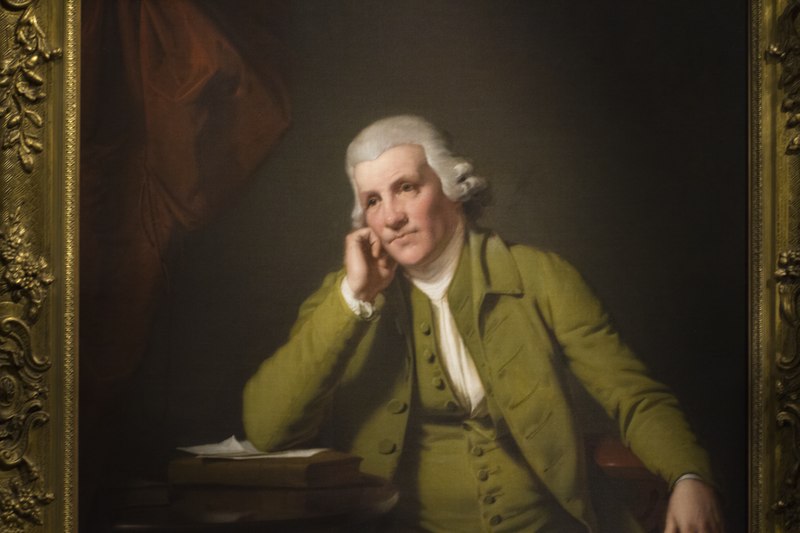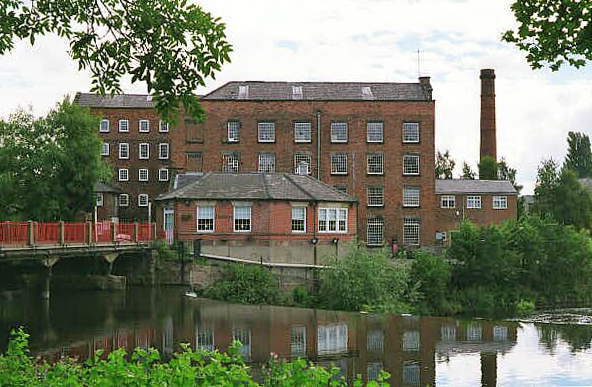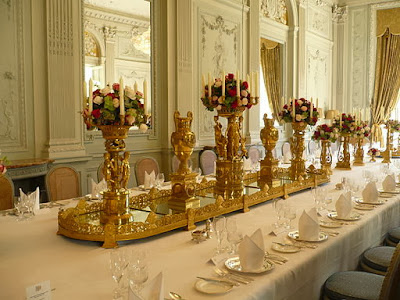by Andrea Zuvich
All photos © Andrea Zuvich.
There’s something about Kensington Palace that immediately conjures up the word glamorous. Perhaps it is because in recent memory, it has been the home of notable, glamorous royals such as the late Princess Margaret, the late Diana, Princess of Wales, and also because of its current inhabitant, Catherine, Duchess of Cambridge. But what we now know of Kensington Palace is very different from what it once was. As I had the great honour to have been on the original team that developed the Garden History Tours at Kensington Palace, I learned first-hand about the history and rather more humble origins of the great royal palace – and I hope to share some of that here with you all today.
Before modern Kensington became the playground of the world’s richest people, it was a sleepy verdant little village renowned for its purity of air. Royals have only inhabited the house since the late 17th-century, when William III and Mary II moved in. But the history of the land goes back farther than that. According to Kensington Palace by W.J. Loftie, a late Victorian historian, the land upon which Kensington Palace now lies was (in the 14th century) on an area called Neyt Manor, one of three manorial estates owned by the Abbey of Westminster. Indeed, archival documents and archaeological assessments from the Royal Borough of Kensington and Chelsea state there was a Neyt Manor in 1386. Whatever building was left standing is believed to have been demolished in 1602.
A Jacobean house was built in 1605 for Sir George Coppin three years after the Neyt Manor structure was razed. Following Coppin’s death in 1619, it was purchased by the Finch family. Much later on, the house was named “Nottingham House” because Sir Heneage Finch was the Earl of Nottingham (since 1681).
In 1688, what is known as the “Glorious Revolution” occurred in which James II was ousted from power by his nephew/son-in-law William of Orange and James’s daughter/William’s wife and cousin, Mary. In 1689, William and Mary were crowned King and Queen, and they soon set out to find where to live. Why? You may well wonder, considering that they already had St. James’s Palace and Whitehall Palace. But Whitehall rested in an area by the River Thames that was full of fog, smoke, and generally unpleasant air. This wreaked havoc with King William’s chronic asthma and so more verdant climes were sought. They soon purchased Nottingham House from Daniel Finch, the 2nd Earl of Nottingham (who happened to be his Secretary of State), for a whopping £14,000-18,000.
After this, they hired Sir Christopher Wren to expand and modernise the Jacobean building into something bigger and more fashionable. Construction work went on between 1689-1690. Unfortunately, Mary was a bit impatient with what she perceived to be the slow progress of the building. This can probably be attributed to her desire to make a comfortable home for William. She wrote to her beloved:
“the schafolds are up, the windows must be boarded up, but as soon as it is done, your own apartment may be furnished.”
Her over-eagerness to get the building works completed meant that the workman built too quickly, and so the quality of their work became a secondary consideration. Mary wrote (original spelling maintained): “This made me go often to Kinsington to hasten the worckmen, and I was so impatient to beat that place, imagining to find more ease there.”
As a result of this, sadly, November 1689 saw part of the newly-built building fall down ‘killing seven or eight workman’ – and this tragedy also occurred during renovation work to Hampton Court Palace. Mary characteristically blamed herself for these deaths.
Her diary continues: “This I often reproved my self for and at last it pleased God to shew me the uncertainty of all things…All this much as it was the fault of the worckmen, humanly speacking, yet shewed me the hand of God plainly in it, and I was truly humbled.”
The gardens were redone at this time as well, with heavily manicured box hedging – elaborately formed in the formal Baroque (modern) style which was then so popular. William and Mary spent nearly the same amount on these magnificent gardens as they did on the house! They both loved gardening and their previous homes in the Dutch Republic (The Netherlands), especially Paleis Het Loo, also had wonderfully symmetrical parterres in this elegant style. Sadly, none of their Kensington gardens exist to this day!
In 1690, the interior of the house began to be decorated with glorious woodcarvings from Baroque carver Grinling Gibbons. Visitors to Kensington Palace’s State Apartments can see these for themselves, in the King’s Presence Chamber and in Queen Mary’s Gallery. Outside the Queen’s Entrance, the monogram (entwined initials) of William and Mary is clearly visible above the doorway.
Mary died from haemorrhagic smallpox in 1694, plunging her husband into a deep grief. John Evelyn, the diarist and courtier, visited the now-sole-monarch William in 1696 at Kensington House and said of it:
“I went to the King’s house at Kensington with some Ladys: The House is very noble, tho not greate; the Gallerys furnished with all the best Pictures of all the Houses, of Titian, Raphael, Correggio, Holbein, Julio Romano, Bassan, V. Dyke: Tintoret, & others, with a world of Porcelain; a pretty private Library; the Garden about it very delicious.”
King William III died in 1702, leaving the throne to his sister-in-law, Anne, who became the last of the Stuarts. The famous statue of William III that faces High Street Kensington is a 20th-century addition – a gift from Kaiser Wilhelm of Germany in 1907. I hope that those who are able to visit Kensington Palace in the future will take a moment and think about this – about the time when Kensington Palace first became a royal residence.
All photos © Andrea Zuvich.
Sources:
· Ashworth, Helen. York Place Kensington. The Heritage Network, via Royal Borough of Kensington and Chelsea. Access date: 27/02/2015.
· Beard, Geoffrey. The Works of Grinling Gibbons. John Murray Publishers Ltd, London, 1989.
· Evelyn, John. Diary.
· Faulkner, Patrick A. Nottingham House: John Thorpe and his Relation to Kensington Palace. Archaeology Data Service. Access date: 27/02/2015.
· Howard, Philip. The Royal Palaces. Hamish Hamilton, London, 1970.
· Loftie, W.J. Kensington Palace. 1898.
· Mary II, Queen. Letters & Memoirs, 1689.
· Tinniswood, Adrian. His Invention So Fertile: A Life of Christopher Wren. Pimlico, London, 2002.
· Williams, Neville. Royal Homes of Great Britain from Medieval to Modern Times. Lutterworth Press, London, 1971.
· WORK 38/428. Sir George Coppin’s House, Kensington. National Archives, Kew, UK.
This is an Editor’s Choice from the #EHFA archives, originally published February 28, 2015.
~~~~~~~~~~
Andrea Zuvich is an independent seventeenth-century historian and anthropologist specialising in the House of Stuart (1603-1714). Zuvich obtained degrees in History and Anthropology at the University of Central Florida and is the host of the popular ‘The Seventeenth Century Lady’ blog. Zuvich is also a historical consultant for TV, film, and radio. She most recently appeared in BBC Four’s ‘Charles I: Downfall of a King’. She was one of the original developers of and leaders on the award-winning Garden History Tours at Kensington Palace and has written six books about the Stuart period. Zuvich is also a trained actress and professional voice-over artist, narrating audiobooks and providing voice work for several mobile apps.
Connect with Andrea on social media:
This is an Editor’s Choice from the #EHFA archives, originally published February 28, 2015.
~~~~~~~~~~
Andrea Zuvich is an independent seventeenth-century historian and anthropologist specialising in the House of Stuart (1603-1714). Zuvich obtained degrees in History and Anthropology at the University of Central Florida and is the host of the popular ‘The Seventeenth Century Lady’ blog. Zuvich is also a historical consultant for TV, film, and radio. She most recently appeared in BBC Four’s ‘Charles I: Downfall of a King’. She was one of the original developers of and leaders on the award-winning Garden History Tours at Kensington Palace and has written six books about the Stuart period. Zuvich is also a trained actress and professional voice-over artist, narrating audiobooks and providing voice work for several mobile apps.
Connect with Andrea on social media:

































